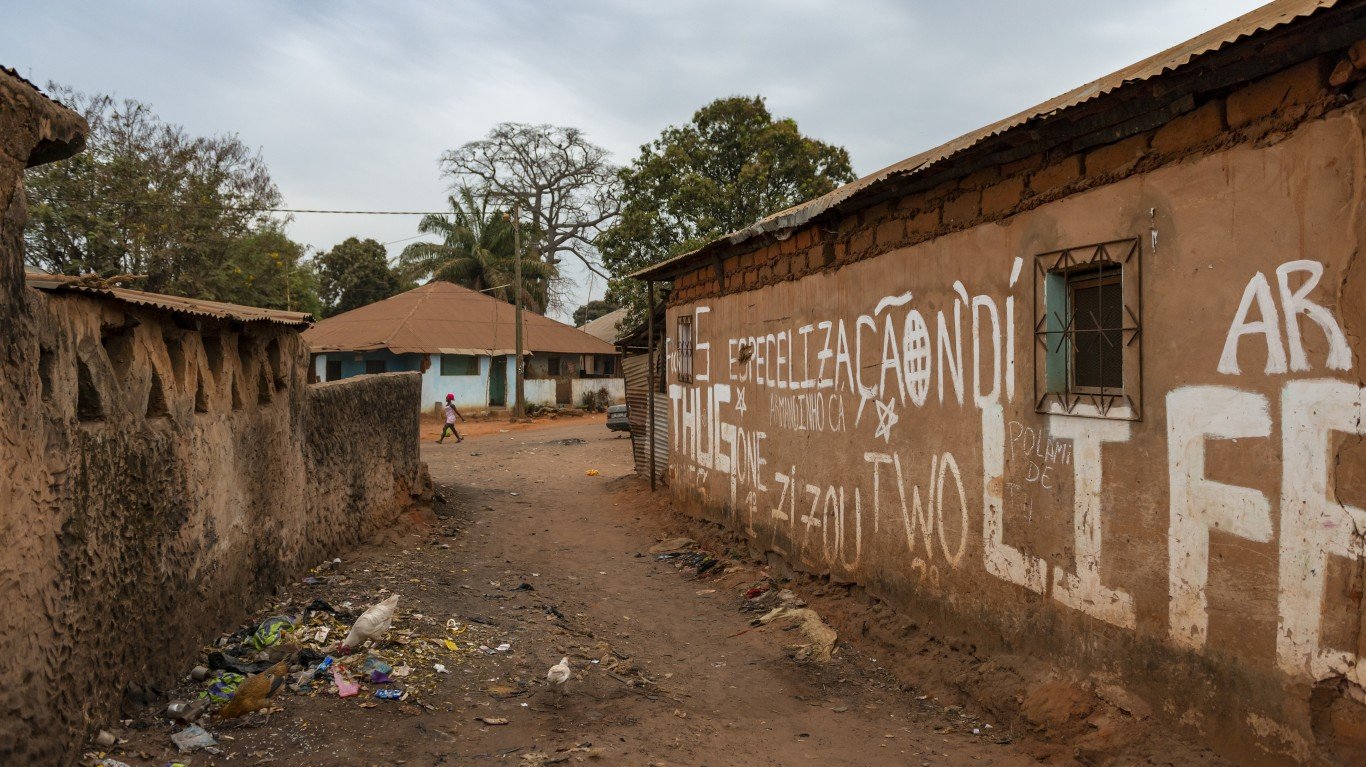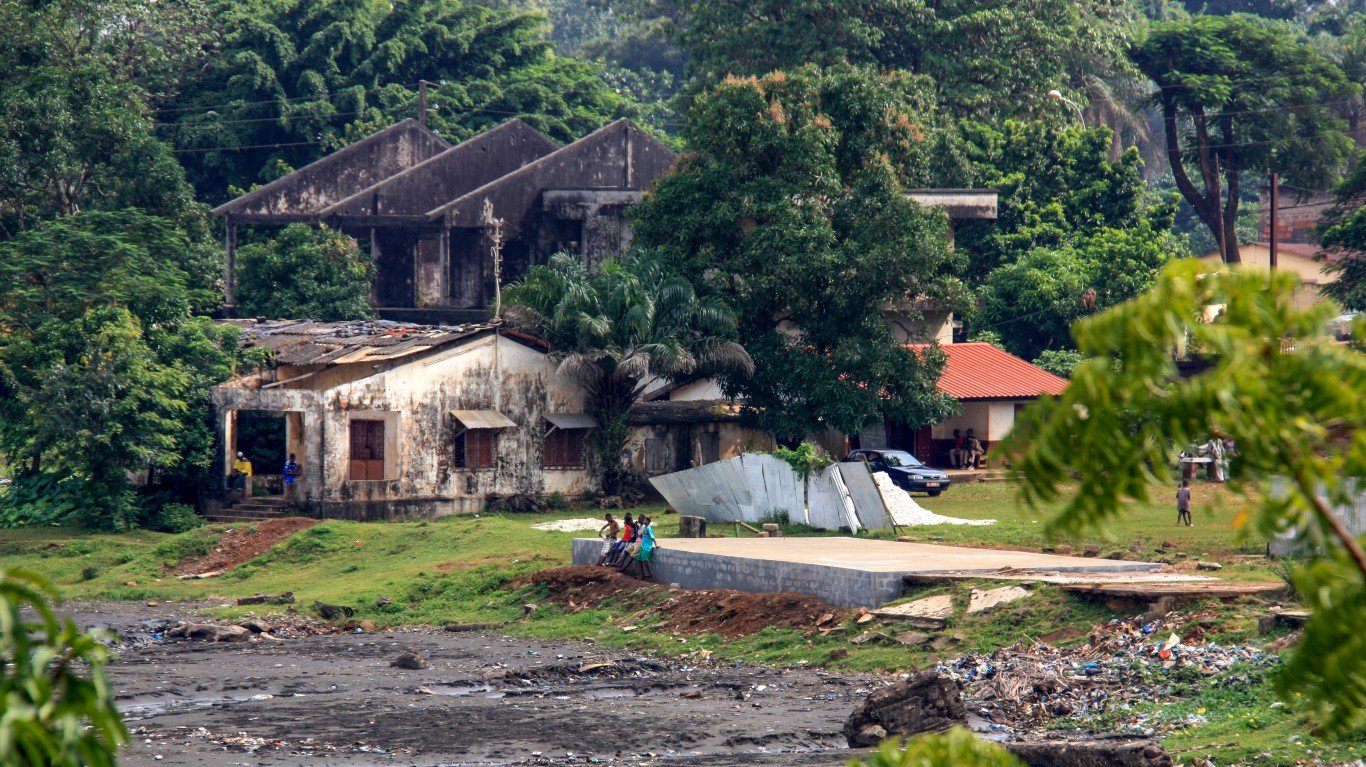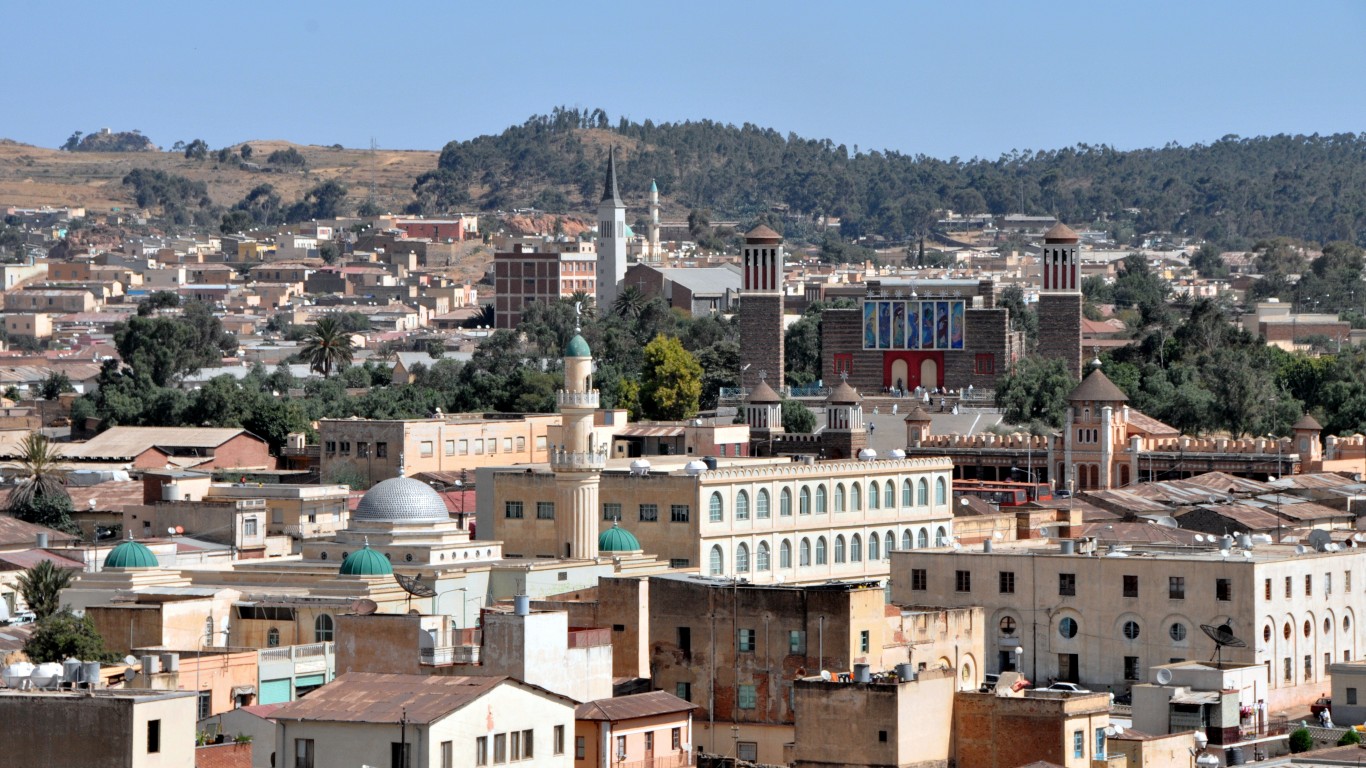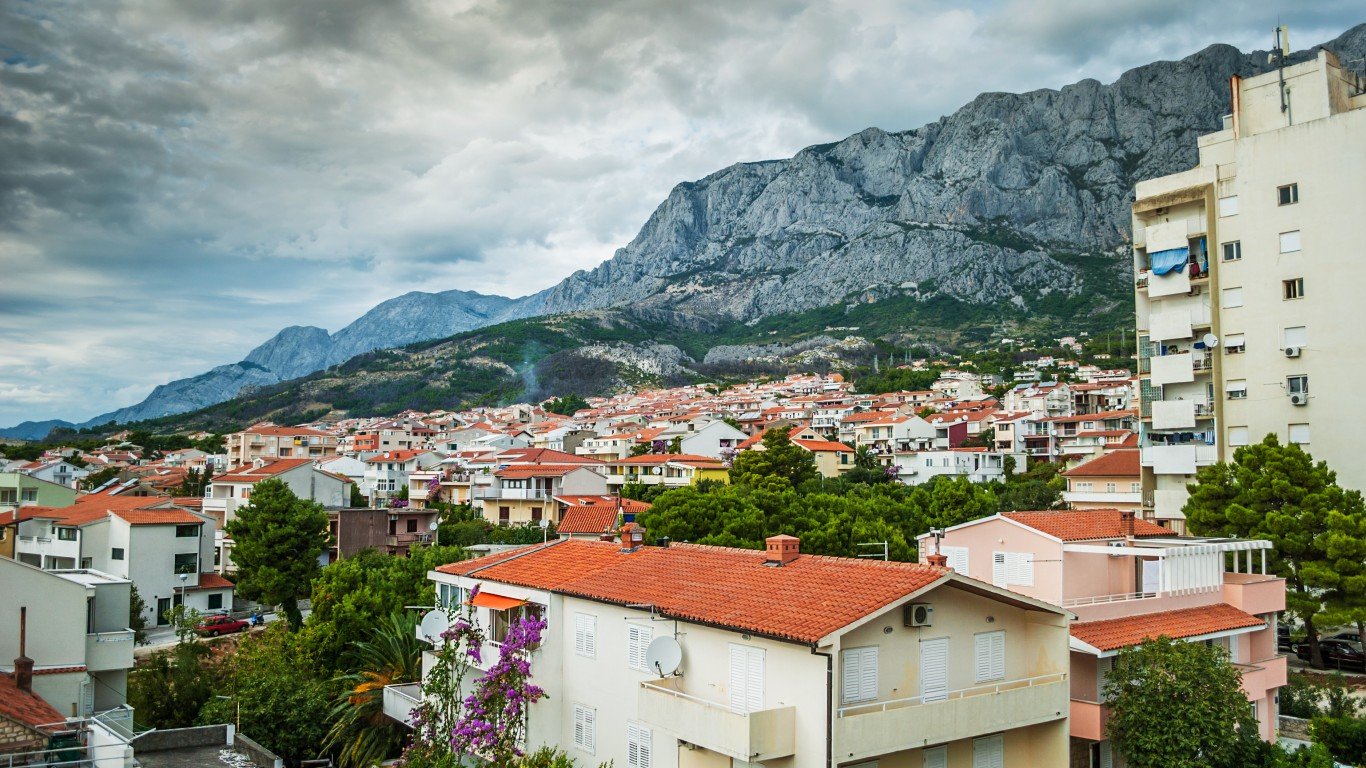
17. Haiti
> Catastrophic ecological threats: Three: Food Security; Natural Disasters; Water Risk
> Global peace index, 2022 (1-5, most to least peaceful): 1.976 – #115 of 163 countries
> GDP per capita, 2021: $1,815 – #42 lowest of 163 countries
> Human development index: 0.5 – #163 of 191 countries
> Population, July 2021 to 2050: 11.4 million to 15.1 million – 31.8% growth
Haiti, the poorest country in the Western Hemisphere, was struck by a 7.2 magnitude earthquake in 2021. Initial reports put the death toll at 2,200 with 12,200 injured and hundreds missing. That followed a devastating 2010 earthquake that took the lives of an estimated 85,000 to 316,000 people. Haiti, which has been experiencing an increase in the number of natural disasters since 1981, is projected to have among the most increase in water stress by 2040

16. Guinea-Bissau
> Catastrophic ecological threats: Three: Food Security; Population; Water Risk
> Global peace index, 2022 (1-5, most to least peaceful): 2.318 – #110 of 163 countries
> GDP per capita, 2021: $813 – #16 lowest of 163 countries
> Human development index: 0.5 – #177 of 191 countries
> Population, July 2021 to 2050: 2.1 million to 3.4 million – 67.2% growth
Situated along the Atlantic Coast of Africa, Guinea-Bissau distinguishes itself from its neighbor Guinea by adding the name of its capital, Bissau. Its overall ecological threat score stands at 5, the highest with three catastrophic ecological threats. The country has the 16th lowest GDP per capita of all countries in the report and has the 15th lowest human development index.

15. Guinea
> Catastrophic ecological threats: Three: Food Security; Population; Water Risk
> Global peace index, 2022 (1-5, most to least peaceful): 2.174 – #123 of 163 countries
> GDP per capita, 2021: $1,174 – #29 lowest of 163 countries
> Human development index: 0.5 – #182 of 191 countries
> Population, July 2021 to 2050: 13.5 million to 23.7 million – 75.2% growth
Guinea is one of six countries in the Sahel region of Africa facing the greatest ecological threats. The Sahel region refers to an area in western and north-central Africa extending from Senegal to the west and east to Sudan, spanning 10 countries. The region is facing numerous social, political and economic vulnerabilities, including high rates of conflict and terrorism. Guinea itself has the 10th lowest human development index.

14. Eritrea
> Catastrophic ecological threats: Three: Food Security; Population; Water Risk
> Global peace index, 2022 (1-5, most to least peaceful): 2.405 – #132 of 163 countries
> GDP per capita, 2011: $643 – #10 lowest of 163 countries
> Human development index: 0.5 – #176 of 191 countries
> Population, July 2021 to 2050: 3.6 million to 6.0 million – 64.7% growth
Conflicts between Eritrea and neighboring Ethiopia threaten regional stability. According to a report in the Sudan Tribune, Eritrea is sending troops to the Tigray region of Ethiopia despite Ethiopia signing a peace treaty with the Tigray People’s Liberation Front. Eritrea, which has the 10th lowest GDP per capita of the 163 countries considered, will have the most increase in water stress by 2040.

13. Equatorial Guinea
> Catastrophic ecological threats: Three: Food Security; Population; Water Risk
> Global peace index, 2022 (1-5, most to least peaceful): 1.882 – #59 of 163 countries
> GDP per capita, 2021: $8,462 – #63 highest of 163 countries
> Human development index: 0.6 – #145 of 191 countries
> Population, July 2021 to 2050: 1.6 million to 2.8 million – 70.7% growth
Located along the West Coast of Africa, Equatorial Guinea is the only Spanish-speaking nation in Africa and one of the largest oil exporters in sub-Saharan Africa. Yet according to the Borgen Project, 60% of its population earns less than $1 day.





